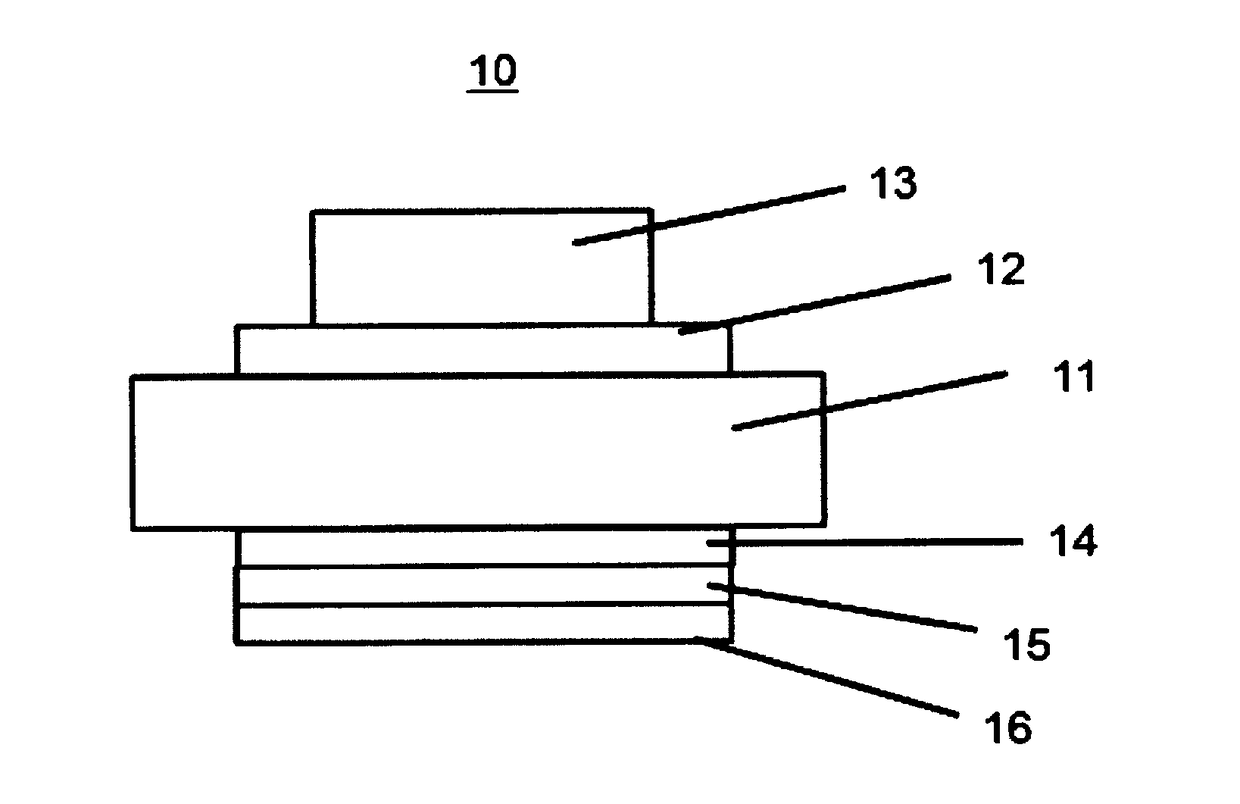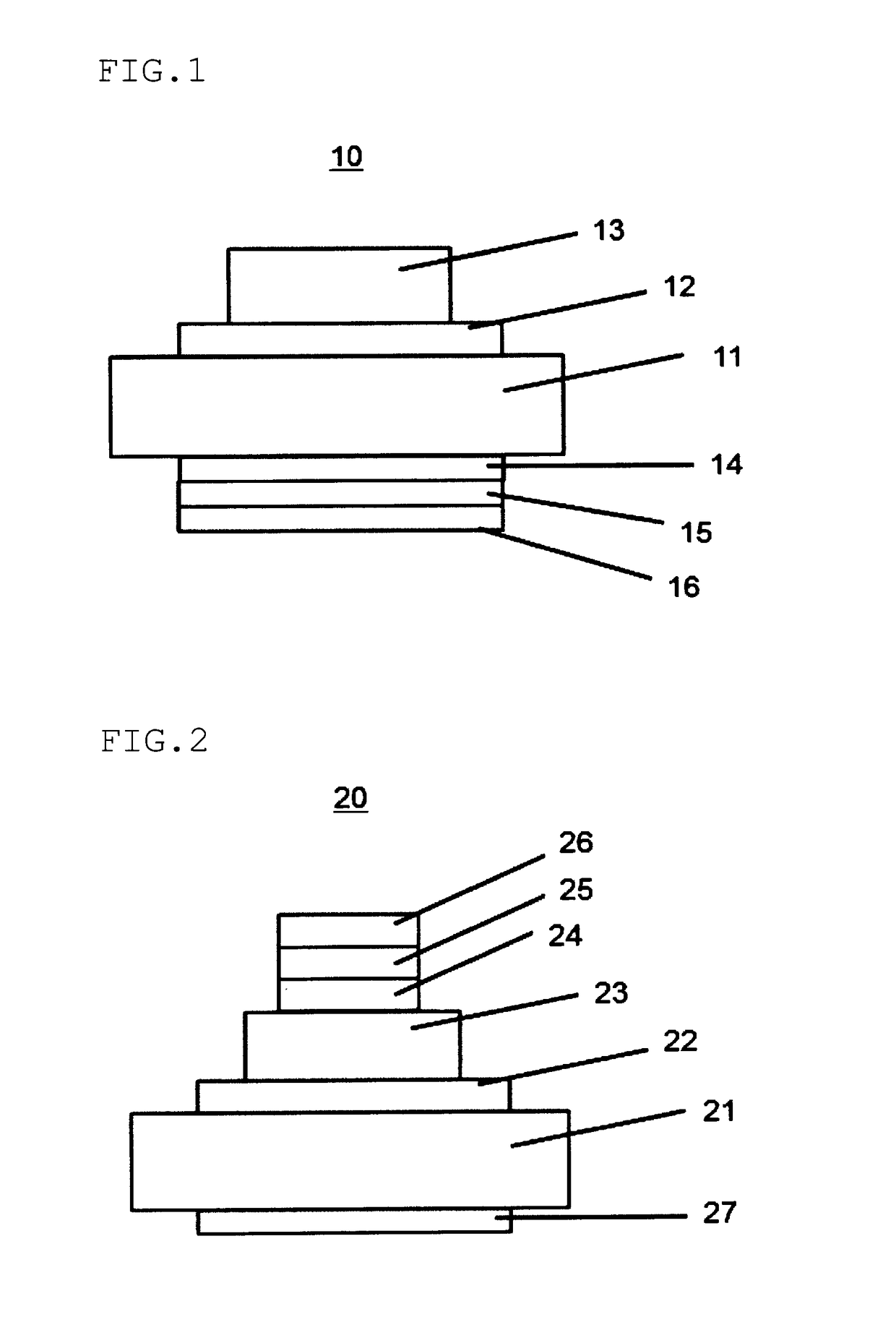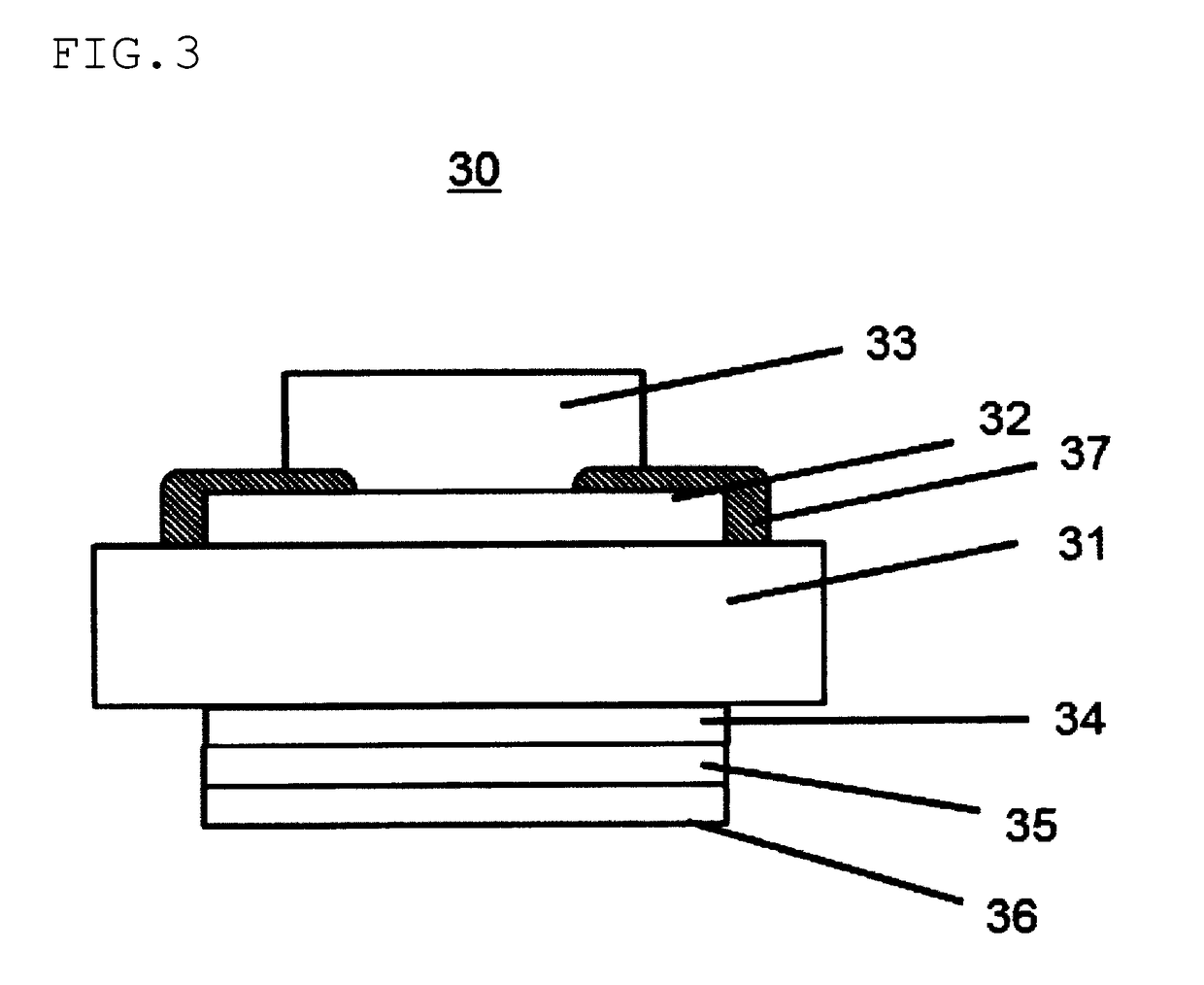Oxide semiconductor substrate and schottky barrier diode
a technology of schottky diodes and semiconductor substrates, which is applied in the direction of basic electric elements, electrical equipment, semiconductor devices, etc., can solve the problems of difficult to obtain crystals with less dislocation, and the use of sic has problems in mass productivity and cos
- Summary
- Abstract
- Description
- Claims
- Application Information
AI Technical Summary
Benefits of technology
Problems solved by technology
Method used
Image
Examples
example 1
[0095]FIG. 1 is a cross-sectional view schematically showing the schottky barrier diode element obtained in Example 1.
[0096]First, an n-type silicon (Si) substrate 11 having a resistivity of 0.02 Ω·cm was prepared. By treating with dilute hydrofluoric acid, a naturally oxidized film formed on the surface of the substrate was removed. This Si substrate was mounted in a sputtering apparatus (HSM552, manufactured by Shimadzu Corporation). By using a sintered body having a composition of In2O3:Ga2O3=95:5 (wt %) as a sputtering target, sputtering discharge was caused to occur under conditions of RF100 W. As a result, on the surface of the Si substrate from which the oxidized film had been removed, a 300 nm-thick oxidized film (IGO film) 12 containing indium and gallium was formed.
[0097]The substrate 11 also functions as a contact electrode.
[0098]Subsequently, this IGO film was patterned by photolithography, thereby to form a desired pattern. In the air, annealing was conducted at 300° C....
examples 2 to 9
[0106]As shown in Table 1, by using a sputtering method, schottky barrier diode elements were prepared and evaluated in the same manner as in Example 1 while changing the compositions of the schottky electrode and the semiconductor. The results are shown in Table 1.
example 10
[0107]FIG. 2 is a cross-sectional view showing the schottky barrier diode element obtained in Example 10.
[0108]First, a p-type silicon substrate 21 having a resistivity of 0.02 Ω·cm was prepared. A naturally oxidized film was removed by dilute hydrofluoric acid, and film formation was conducted by sputtering by using a Pd target, whereby a Pd electrode 22 was formed. Subsequently, the surface of this Pd electrode was subjected to an oxidizing treatment with UV ozone. Then, in the same manner as in Example 1, an IGO film 23 was formed by sputtering. The film was subjected to annealing in the air at 300° C. for 1 hour. Films were formed by sputtering in the order of a Ti layer 24, a Ni layer 25 and an Au layer 26, whereby an ohmic electrode was formed.
[0109]For the backside of the p-type silicon substrate (on the surface opposite to the surface on which the Pd electrode was formed), after removing a naturally oxidized film with dilute hydrofluoric acid, a TiAl film 27 was formed by sp...
PUM
 Login to View More
Login to View More Abstract
Description
Claims
Application Information
 Login to View More
Login to View More - R&D
- Intellectual Property
- Life Sciences
- Materials
- Tech Scout
- Unparalleled Data Quality
- Higher Quality Content
- 60% Fewer Hallucinations
Browse by: Latest US Patents, China's latest patents, Technical Efficacy Thesaurus, Application Domain, Technology Topic, Popular Technical Reports.
© 2025 PatSnap. All rights reserved.Legal|Privacy policy|Modern Slavery Act Transparency Statement|Sitemap|About US| Contact US: help@patsnap.com



